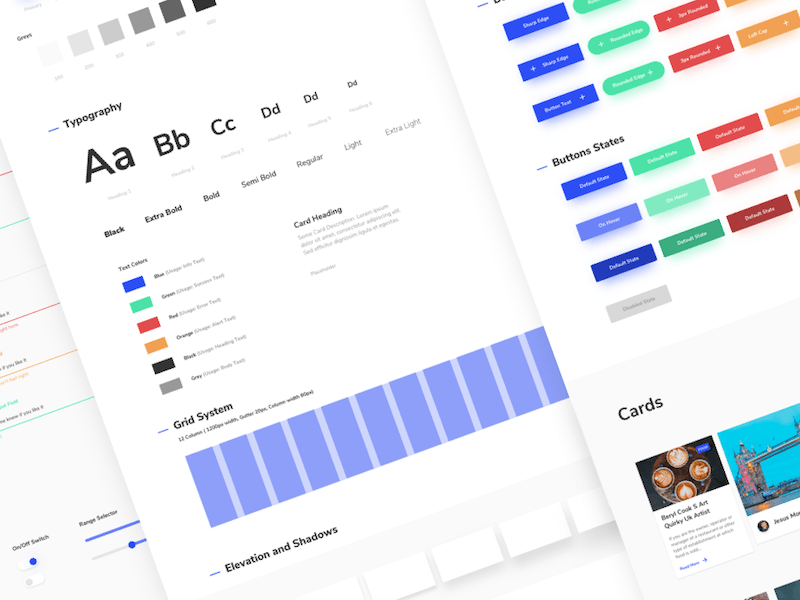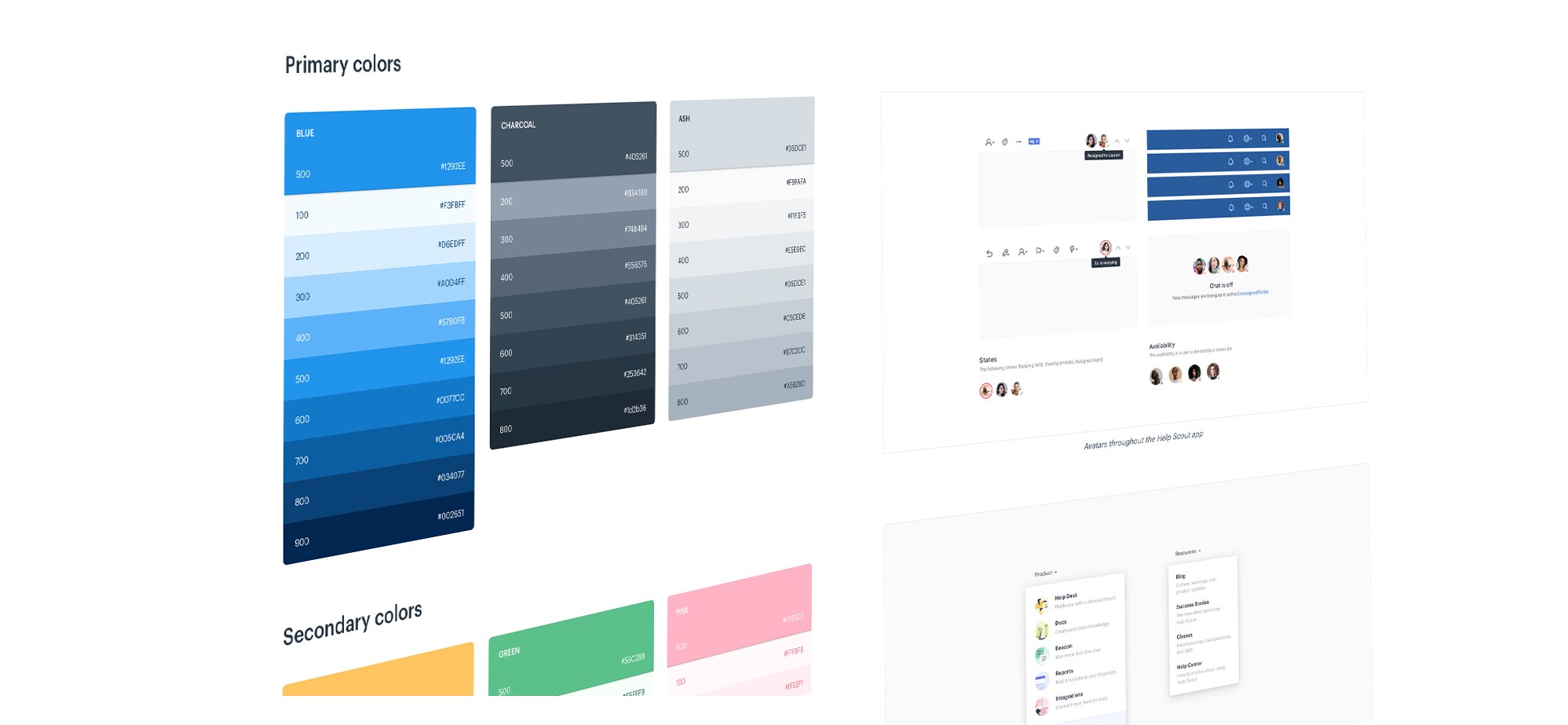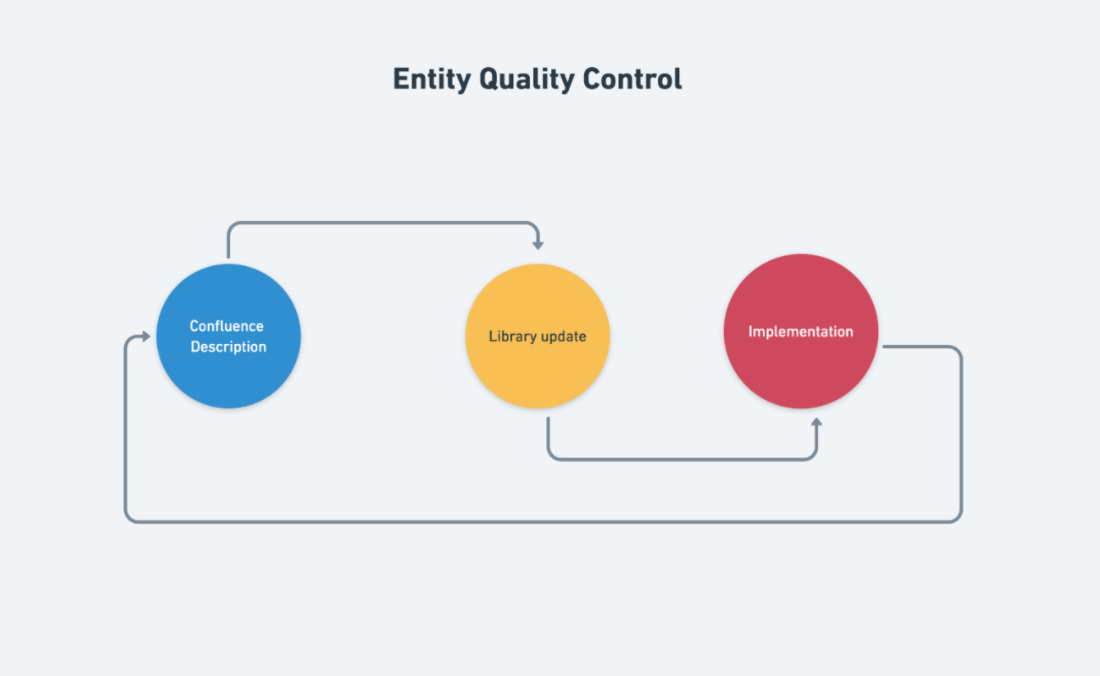What does a design system do? A design system is a collection of design patterns, practices, and interactions that enable developers to create quality interfaces consistently.
Design systems can be considered primary sources of the correct format for the UI, which are then refined from project to project, taking into account individual specifications. These streamline steps of the work process, ensure the consistency of the designer team operation, and increase the efficiency of each member’s interaction.
According to the Enterprise UX Industry Report for 2017-2018, 69% of surveyed large corporations answered that they either already use some design system or plan to employ one. Therefore, let us look at the design system benefits and reasons to employ it.
Why a Design System Is Important?
What are the reasons to introduce such a methodology into business processes? An established design system allows:
Maximizing the collaborative productivity metrics
Design is becoming increasingly complicated these days and includes more and more cross-functional teams. By having standard rules for creating designs, as well as guidelines and resources, teams can collaborate efficiently and make informed decisions, which in turn speeds up product development and testing.
Saving business time
Reusing already approved items empowers employees to focus on more critical tasks and reduces the repetitive work from project to project. Besides, reusing the elements will reduce the costs of implementing subsequent undertakings.
Improving the level of consistency between teams
Having a single source – that is, the repository of tested components and templates – increases the consistency, usability, and availability for future products. The development using ready design patterns is highly systematic. Despite the experience and skills of specific employees, results are consistent and predictable across the team.
Developing the design community
Having a design system will help to strengthen the existing or create a new design community within the company.
Also, many companies have a need for cross-project and cross-platform design reviews. This is necessary so that employees can learn from each other and do not duplicate the work that was already done in some previous project.
Design System Benefits – Why Do You Need It?
Now, let us review the main design system benefits.
Reduced time to market
Thanks to a unified repository of reusable resources, the UI design process’s timeframe is reduced notably. The product will be ready and hit the market faster.
Increased product value
Uniform design and reusable elements result in a coherent appearance of the branded products. By using the same templates, interacting with your product becomes more straightforward and intuitive.
At the same time, brand awareness increases, and the user experience becomes more comfortable. As a result, the value of the product grows.
Reduced costs
With a design system in place, developers spend less time building an interface. Overall efficiency increases, and this, in turn, leads to less consumption of resources and, accordingly, funds.
At the same time, reusing existing elements allows developers to focus all their time on achieving results and increasing product value.
Design System Creation Process
Finally, we want to draw your attention to the stages that creating a design system consists of.
General steps
- Create rules for naming and version management;
- Gather all UI elements into a separate Sketch/Figma file and convert it into the library;
- Document each function in detail;
- Evaluate stored elements by collecting the team member feedback.
After the development of the design system, when adding or updating some stored element, subject it to a maximally extensive quality control procedure first.
Quality assurance process
The typical quality control process of a design system consists of three stages:
- Confluence description;
- Library update;
- Deployment.
This process is cyclical and reciprocated until the design team is satisfied with the result completely and the product meets the specifications indicated in the project documentation.
Impressive Examples
In our opinion, Trello’s Nachos is one of the best design systems on the market today. Now, they moved on to market it as a public solution accompanied by a complete development guide.
Other two notable design system examples we have to mention are Carbon Design System and Google’s Material Design.
Our Story
We were once dealing with the redesign of a large-scale product. In the process, our team noticed that its members’ routine productive work was hampered by some problems with the differentiation of statuses, custom labels, and codes.
In this regard, we tried to preserve the system’s integrity. Still, from module to module, it was becoming more and more difficult. Therefore, our team decided to start with a quick analysis of what we have now, what it is for, and what it looks like.
As a result, we identified three main groups of markings (we decided to use a new term so as not to be confused) and, in fact, started to implement the design system of our own. We are currently employing it when implementing each new project, thereby bringing the date of release closer and reducing the customer expenses.
The Two Main Challenges When Creating and Maintaining a Viable DS
- A design system should always be kept up-to-date. We use our DS as a reference when working on the product. In the process, new templates and elements may be created and improvements made to existing ones. After the product is launched, the system is finalized in its current state and a version number assigned. New versions of the system appear as we release the next products to keep with the times and the development of information technologies.
- Building and maintaining such a system bears ongoing costs. On the other hand, the design system saves many hours of developing new products.
Do You Need a Design System?
In this article, we strove to explain what is the point of a design system. We also explained the benefits of developing such systems for business. In short, three main advantages are better and more consistent interface design process, reduced development costs, and higher product value.
If you need a design system for your brand or software ecosystem, feel free to contact us today. Our team of experienced developers and designers will cope with any, even the most non-standard task, proven by years on the market. Don’t hesitate to contact us with your project idea.









